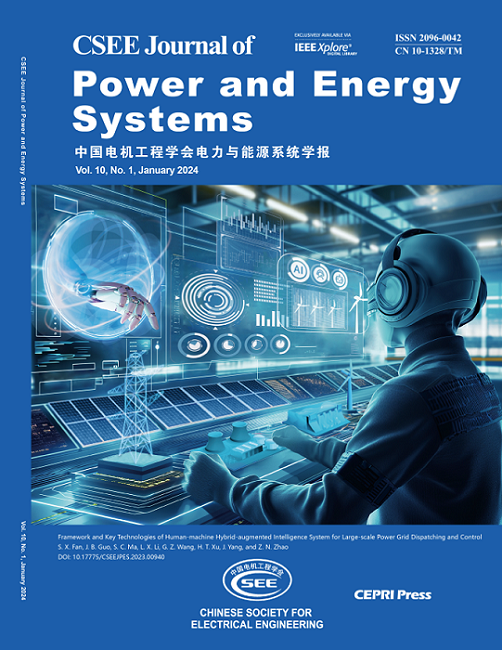Charge Accumulation Characteristics of SF6-Epoxy Interface Under Negative Repetitive Nanosecond Pulses
IF 6.9
2区 工程技术
Q2 ENERGY & FUELS
引用次数: 0
Abstract
Repetitve nanosecond impulses in gas-insulated metal-enclosed switchgear (GIS) are likely to trigger inside flashover. Interface charges on the spacer in GIS are considered one of the main factors damaging insulation performance and may be induced by overvoltage. For good understanding of insulation failures, accumulation characteristics of charges between SF负重复纳秒脉冲下 SF6-Epoxy 界面的电荷累积特性
气体绝缘金属封闭开关设备(GIS)中重复出现的纳秒脉冲很可能引发内部闪络。GIS 中隔板上的界面电荷被认为是损害绝缘性能的主要因素之一,可能是由过电压引起的。为了更好地理解绝缘故障,我们研究了 SF6 和环氧树脂间隔物在重复纳秒脉冲下的电荷累积特性。研究发现,在纳秒脉冲下,气体体积中的电荷源对界面电荷积累起主要作用。界面电荷会受到脉冲数和振幅的影响。根据电子失控机制分析了积累过程。当脉冲振幅超过阈值时,气体体积中的放电就会转为失控模式。失控电子导致界面电荷累积。受失控电子运动的影响,当脉冲振幅升高时,电位峰会逐渐靠近接地电极。同时,脉冲数的增加会增强表面电位。表面电位最终会达到饱和状态。但是,重复脉冲放电的记忆效应会使界面表面电位的半峰宽度变化很小。GIS 气固绝缘的设计可以参考这项研究。
本文章由计算机程序翻译,如有差异,请以英文原文为准。
求助全文
约1分钟内获得全文
求助全文
来源期刊

CSEE Journal of Power and Energy Systems
Energy-Energy (all)
CiteScore
11.80
自引率
12.70%
发文量
389
审稿时长
26 weeks
期刊介绍:
The CSEE Journal of Power and Energy Systems (JPES) is an international bimonthly journal published by the Chinese Society for Electrical Engineering (CSEE) in collaboration with CEPRI (China Electric Power Research Institute) and IEEE (The Institute of Electrical and Electronics Engineers) Inc. Indexed by SCI, Scopus, INSPEC, CSAD (Chinese Science Abstracts Database), DOAJ, and ProQuest, it serves as a platform for reporting cutting-edge theories, methods, technologies, and applications shaping the development of power systems in energy transition. The journal offers authors an international platform to enhance the reach and impact of their contributions.
 求助内容:
求助内容: 应助结果提醒方式:
应助结果提醒方式:


